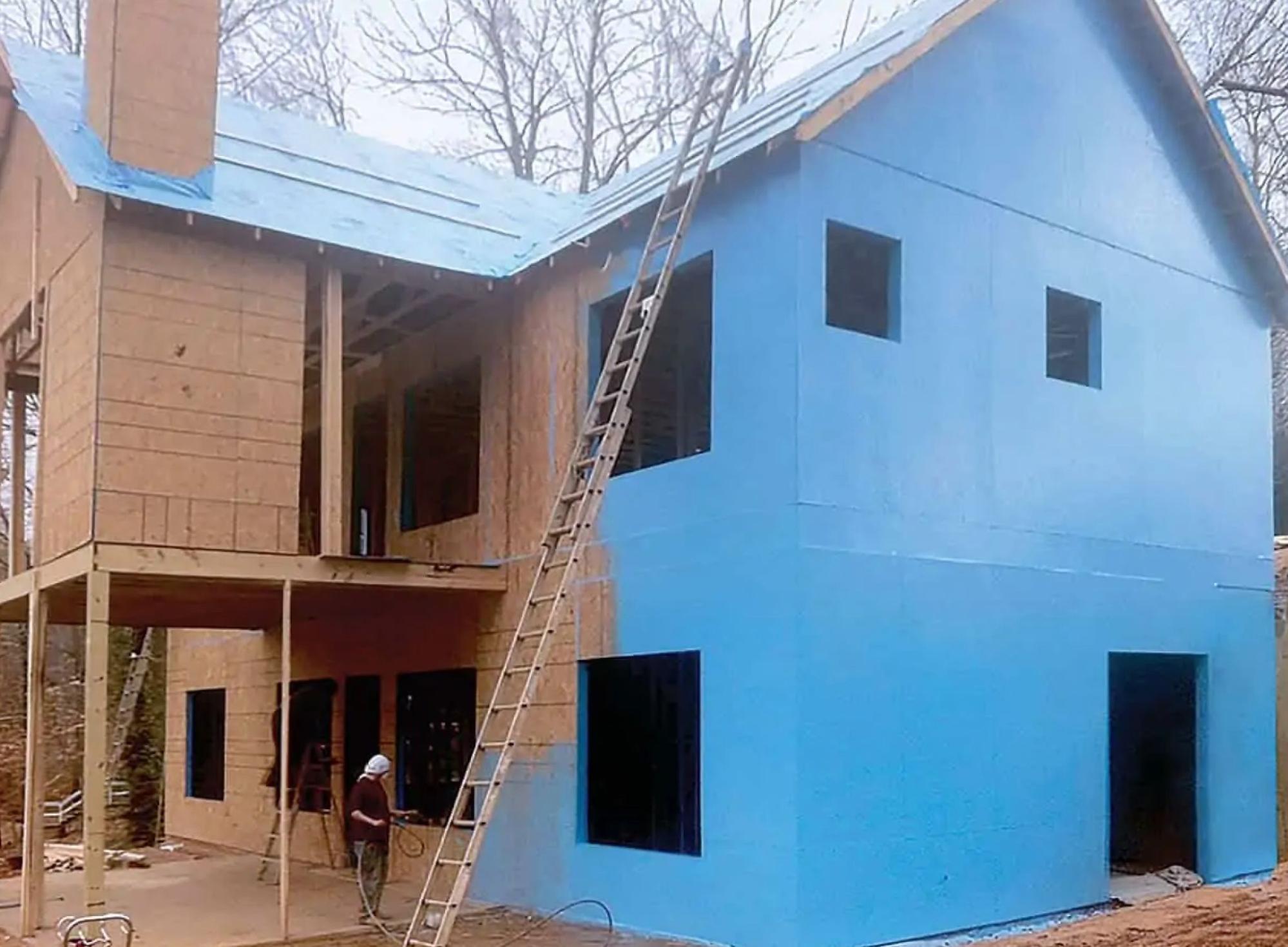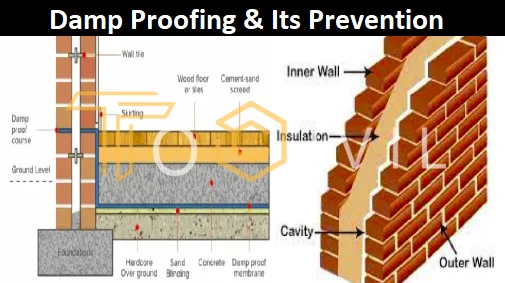Checking Out the Various Strategies and Solutions for Effective Damp Proofing
Moisture in buildings positions significant challenges to both structural stability and interior air high quality. Different methods and services have emerged to battle this pervasive problem. From typical damp-proof membrane layers to ingenious chemical treatments, each approach offers special benefits. Recognizing these choices is essential for reliable moisture control. Nonetheless, picking the best solution depends upon particular building conditions and requirements, triggering further expedition into the most efficient moist proofing techniques offered.
Recognizing the Reasons For Wetness
Although moisture can occur from various resources, recognizing these reasons is crucial for reliable removal. Typically, dampness originates from three primary sources: climbing damp, passing through moist, and condensation. Climbing wet takes place when groundwater travels up-wards via permeable products, such as brick or rock, commonly because of a lack of a reliable obstacle (damp removal newcastle). Permeating moist is generally brought on by outside variables, consisting of roofing system leakages, malfunctioning gutters, or harmed wall surfaces, allowing water to infiltrate a home. Condensation, on the other hand, results from excess moisture in the air, frequently intensified by bad air flow and temperature distinctions, bring about water droplets creating on surface areas. Recognizing these underlying concerns is vital, as each kind of wetness requires a tailored strategy for removal. Appropriate assessment assists in determining one of the most effective options, eventually safeguarding the architectural honesty of a structure and enhancing interior air quality
Traditional Damp-Proof Membranes

Chemical Damp-Proofing Solutions
Chemical damp-proofing services use an innovative technique to stop dampness invasion in structures. These techniques usually involve the application of liquid chemicals that pass through masonry and develop a barrier versus increasing damp. Frequently made use of chemicals consist of silanes, siloxanes, and various other water-repellent agents that react with surface area materials to create a hydrophobic layer.The application process usually requires drilling openings into the walls, infusing the chemical option, and allowing it to treat. This approach is especially advantageous for older frameworks where standard damp-proof membrane layers might be not practical. Additionally, chemical damp-proofing can be much less turbulent and much more cost-effective than considerable remodelling projects.While effective, these options depend upon proper application and ecological problems for peak efficiency. Routine upkeep and surveillance are necessary to ensure the durability of the damp-proofing therapy. On the whole, chemical damp-proofing represents a versatile choice for guarding structures versus moisture-related damages
Cavity Wall Building Techniques
Tooth cavity wall surface building techniques offer various benefits, especially in wetness control and power effectiveness. By including an air gap between 2 layers of masonry, these walls efficiently minimize water ingress while enhancing insulation. This mix not only shields frameworks from wetness but likewise adds to decreased energy consumption.
Advantages of Cavity Walls
When thinking about efficient damp proofing methods, the benefits of dental caries wall surfaces stick out plainly. Tooth cavity walls are composed of two separate layers, creating an air void that successfully lowers dampness penetration. This design minimizes the risk of dampness, as the outer wall surface works as a barrier against rain and water access. Furthermore, tooth cavity walls enhance thermal insulation, which adds to power performance by minimizing warmth loss. They also give audio insulation, aiding to create a quieter indoor atmosphere. The air void allows for ventilation, which helps in dampness control and lowers the chance of mold growth. These advantages not just boost the total comfort of a building however likewise contribute to its durability and structural integrity.
Moisture Control Methods
Reliable wetness control methods are essential in tooth cavity wall building to ensure long-lasting security against wetness. One main approach entails the consolidation of weep holes, which help with water drain from the tooth cavity, protecting against buildup. Additionally, using breathable membranes can assist take care of dampness levels while allowing entraped vapor to escape. Correct positioning of insulation is also crucial, as it must not block drainage courses. Moreover, guaranteeing that the outer here leaves of the tooth cavity wall surface are created with water-resistant materials enhances total durability. Normal upkeep checks are vital to identify any kind of blockages or damage early, securing the framework's integrity. Eventually, a combination of these methods develops a robust protection versus moisture breach in dental caries walls.
Insulation and Energy Effectiveness
Insulation plays an important role in boosting power efficiency within dental caries wall surface construction. By including shielding products, these wall surfaces develop a thermal barrier that minimizes warmth loss and lowers energy usage. Effective insulation not only helps keep a stable interior temperature level however additionally alleviates the danger of wetness, as it prevents condensation within the wall surface tooth cavity. Different strategies, such as using inflexible foam boards or mineral woollen, can be used to achieve ideal insulation performance. In addition, proper setup is important to guarantee that voids and gaps are reduced, which can otherwise compromise power efficiency. Ultimately, a well-insulated tooth cavity wall surface contributes considerably to general sustainability and decreases cooling and heating prices for home owners.
Outside Damp Proofing Approaches
Outside wet proofing techniques are necessary for protecting structures from wetness infiltration. Two effective methods include the application of waterproof membrane layers and the setup of French drains pipes. These solutions assist reduce water accumulation and protect the stability of structures.
Waterproof Membrane Layer Application
While numerous methods exist for protecting against moisture access, the application of waterproof membranes stays a very effective external wet proofing method. These membrane layers are usually made from products such as polyethylene, rubber, or changed asphalt, offering a robust obstacle against water penetration. The setup process involves using the membrane layer to the exterior surfaces of structures or walls, making certain complete coverage to stop leaks. Correct attachment and sealing at joints are critical to taking full advantage of performance. Water resistant membranes can be used in different kinds, consisting of liquid coatings and sheet membrane layers, allowing for versatility based on the details demands of the structure. This approach not just protects structures from dampness however likewise enhances their durability and structural stability.
French Drain Installation
One effective technique for handling groundwater and preventing dampness build-up around a structure's foundation is the installation of a French drain. This water drainage system contains a trench loaded with crushed rock and a perforated pipeline that redirects surface area water far from the foundation. Appropriate installment requires mindful planning, ensuring that the drain inclines far from the framework to promote perfect water flow. In addition, the location of the drain is vital; it needs to be placed in areas prone to pooling or excess wetness. Routine maintenance, including cleaning particles from the gravel and making sure the pipe remains unobstructed, is crucial for lasting efficiency. Ultimately, a well-installed French drainpipe can greatly reduce the threat of water-related concerns in cellars and foundations.
Inside Waterproofing Approaches
Inside waterproofing methods are crucial for safeguarding a building's interior from dampness infiltration and potential water damages. These strategies usually include the application of customized materials and strategies made to create a dampness barrier within the structure. One common technique is using water resistant finishings or sealants on wall surfaces and floors, which prevent moisture from penetrating surfaces.Additionally, mounting interior water drainage systems, such as sump pumps, can effectively handle water buildup in basements and crawl rooms. One more technique entails the usage of vapor obstacles, which are installed to prevent wetness movement from the ground into living spaces.Moreover, addressing any kind of splits or gaps in wall surfaces or foundations with ideal sealants assures an extensive defense versus water intrusion. By executing these interior waterproofing strategies, homeowner can considerably reduce the danger of mold growth, structural damages, and various other moisture-related concerns. Appropriate execution of these strategies is important for long-lasting security and building honesty.
Regular Maintenance and Examination Practices
Regular upkeep and evaluation techniques are important for guaranteeing the long-lasting performance of wet proofing services in any type of structure. Routine checks make it possible for homeowner to recognize early indicators of dampness intrusion, such as peeling paint, mold and mildew development, and musty smells. These indications can indicate underlying problems that require instant attention.Inspections should be conducted at least yearly, focusing on prone locations like cellars, crawl spaces, and outside wall surfaces. During these assessments, homeowner must analyze sealants, drain systems, and ventilation to confirm they function correctly.Additionally, keeping downspouts and rain gutters is vital, as blocked systems can cause water build-up near the structure. Applying a routine upkeep routine, together with timely repairs, can considerably prolong the lifespan of damp proofing actions and safeguard the structural stability of the building. Positive procedures eventually add to the general health and wellness of the living environment.
Often Asked Concerns
The Length Of Time Does Damp Proofing Usually Last?
The period of damp proofing effectiveness varies, typically lasting in between 20 to 50 years. Variables such as application quality, environmental problems, and maintenance practices considerably affect the long life of the wet proofing therapy.

Can I Damp Evidence My Home Myself?
The individual considered the feasibility of DIY damp proofing. With proper research study and the ideal materials, it is possible. They also acknowledged the importance of specialist assistance to ensure lasting efficiency and avoid future problems.
What Are the Indications of Ineffective Damp Proofing?
Indicators of ineffective damp proofing consist of relentless moldy smells, visible mold development, peeling paint, moist spots on walls, and wood decay - mould removal newcastle. Property owners need to deal with these issues immediately to protect against more damage and health and wellness worries
Does Damp Proofing Affect Indoor Air High Quality?

Just How Much Does Professional Damp Proofing Price?
Expert damp proofing prices vary considerably, normally varying from $1,000 to $5,000 depending on the residential property's dimension, the degree of the moist concern, and selected techniques. Each scenario calls for a tailored evaluation for accurate prices. Frequently, dampness stems from three main resources: rising damp, penetrating moist, and condensation. When considering efficient damp proofing methods, the benefits of tooth cavity wall surfaces stand out plainly. Exterior moist proofing approaches are vital for shielding structures from wetness seepage. While different methods exist for stopping wetness access, the application of water-proof membranes remains a highly reliable exterior moist proofing technique. Indications of inefficient damp proofing include consistent musty smells, noticeable mold and mildew growth, peeling paint, wet patches on walls, and wood decay.
Comments on “10 essential tools damp specialist newcastle uses during inspection”